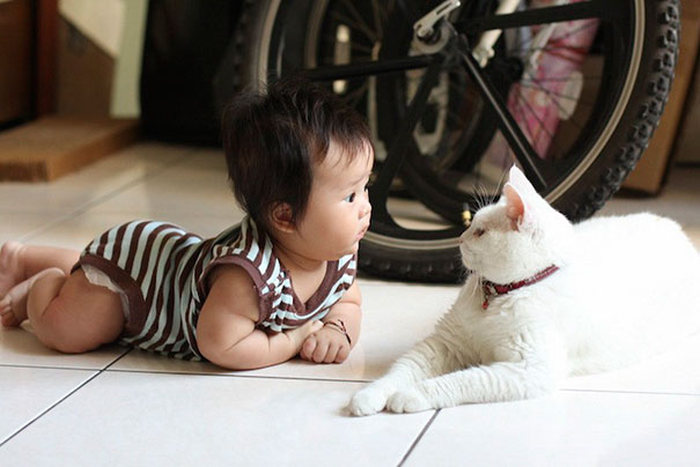|
|
Cat And The Child
|
The cat skull is unusual among mammals in having very large eye sockets and a powerful and specialized jaw. Within the jaw, cats have teeth adapted for killing prey and tearing meat. When it overpowers its prey, a cat delivers a lethal neck bite with its two long canine teeth, inserting them between two of the prey's vertebrae and severing its spinal cord, causing irreversible paralysis and death. Compared to other felines, domestic cats have narrowly spaced canine teeth; which is an adaptation to their preferred prey of small rodents, which have small vertebrae. The premolar and first molar together compose the carnassial pair on each side of the mouth, which efficiently shears meat into small pieces, like a pair of scissors. These are vital in feeding, since cats' small molars cannot chew food effectively.
Cats, like dogs, are digitigrades. They walk directly on their toes, with the bones of their feet making up the lower part of the visible leg. Cats are capable of walking very precisely, because like all felines they directly register; that is, they place each hind paw (almost) directly in the print of the corresponding forepaw, minimizing noise and visible tracks. This also provides sure footing for their hind paws when they navigate rough terrain. Unlike most mammals, when cats walk, they use a "diagonal" gait; that is, they move the two legs on one side of the body before the legs on the other side. This trait is shared with camels and giraffes. As a walk speeds up into a trot, a cat's gait will change to be similar to other mammals: the diagonally opposite hind and forelegs will move simultaneously.
Like almost all members of the Felidae family, cats have protractable claws. In their normal, relaxed position the claws are sheathed with the skin and fur around the toe pads. This keeps the claws sharp by preventing wear from contact with the ground and allows the silent stalking of prey. The claws on the forefeet are typically sharper than those on the hind feet. Cats can voluntarily extend their claws on one or more paws. They may extend their claws in hunting or self-defense, climbing, "kneading", or for extra traction on soft surfaces. Most cats have five claws on their front paws, and four on their rear paws. The fifth front claw (the dewclaw) is proximal to the other claws. More proximally, there is a protrusion which appears to be a sixth "finger". This special feature of the front paws, on the inside of the wrists, is the carpal pad, also found on the paws of big cats and dogs. It has no function in normal walking, but is thought to be an anti-skidding device used while jumping. Some breeds of cats are prone to polydactylyism, and may have eight or even ten toes. These are particularly common along the North-East coast of North America.
|
|









